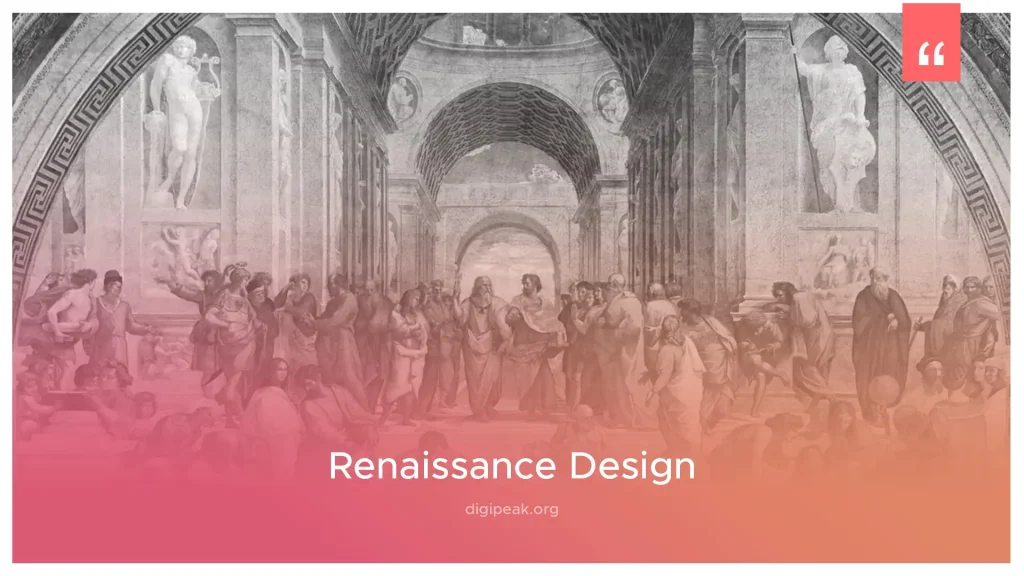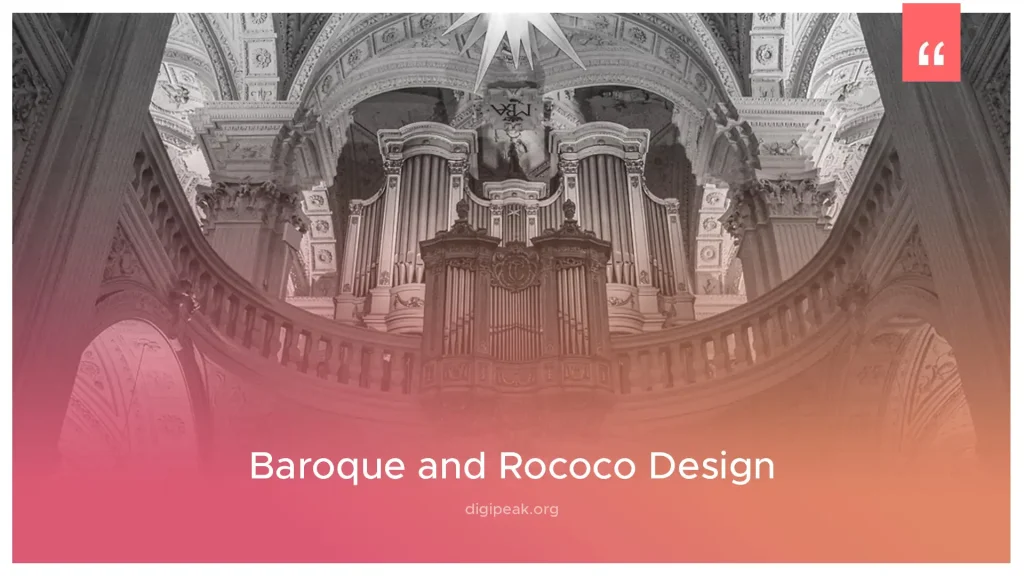
Pinterest Advertising: A Complete Guide by Digipeak
At Digipeak, we've helped countless businesses transform their digital presence through Pinterest advertising. Through our …
31/07/2023 -
6 dk okuma
Stay up to date with Peakers
Technology advancements, shifting societal values, and globalization have all driven a remarkable transformation in design. Where intricate detailing and ostentatious ornamentation once reigned supreme, contemporary design now favors minimalism, clean lines, and functionality.
The main focus has shifted from aesthetics to user-centered design, creating intuitive and seamless experiences across various platforms. With the rise of digital technologies, design has broadened people’s horizons with immersive experiences. Today, design is characterized by its dynamic and ever-evolving nature, adapting to the world’s changing needs and preferences.
In this blog post, we will explore the fascinating evolution of design. We will take a journey from the ornate details of the past to the minimalism of today, from aesthetic-driven design to user-centered approaches.
Are you ready to explore the dynamic and ever-evolving nature of design and how it adapts to the changing needs and preferences of the world? So let’s get started!
The periodic exposure of design culture to radical changes has elicited a variety of reactions from people. Some people have eagerly embraced new design developments, expressing excitement and curiosity for innovative approaches that push boundaries and challenge conventions.
They appreciated designs that enriched their experience, offered convenience, or improved functionality. Others were skeptical of design developments, questioning the necessity or practicality of new trends. They preferred familiar and established design aesthetics, resisted change, and sought designs that aligned with their existing preferences.
While design developments from the past to the present provide numerous benefits, there are also some possible risks and disadvantages that need to be taken into account. One disadvantage is the risk of designs losing their historical and cultural significance.
As design trends evolve rapidly, there is the possibility that traditional aesthetics and cultural heritage may be ignored or underestimated in favor of contemporary styles. In addition, the rapid nature of design change can lead to a culture of disposable products and a lack of durability.
With the focus on constantly updating and changing designs, sustainability and long-term impact can take a back seat. Finally, design change can also exclude certain people or communities that do not have access to or are not familiar with the latest technologies or design advances, exacerbating social and economic inequalities.
To ensure a sustainable and inclusive design environment, it is crucial to strike a balance between embracing design change and preserving valuable aspects of the past.
[cta-ekle slogan-metni=”The design of your web and mobile applications can bring you closer to your customers. Make a difference in your applications with our user-centered approach! ” buton-metni=”Call us Now”]
It is important to note that design is a dynamic field, constantly evolving and responding to the changing needs, tastes, and cultural contexts of society. Let’s take a brief look at the design movements of different eras:
Designs from this period were characterized by ornate details, intricate patterns, and a focus on symmetry. Examples include Egyptian hieroglyphs, Greek architecture, and Roman art.

Design in the medieval period was heavily influenced by religious and feudal systems. Gothic architecture, with its dark design interpretations, patterned vaults and stained glass windows, emerged as an unorthodox design style.

The Renaissance period marked the revival of classical Greek and Roman art/design principles. It emphasized proportion, perspective and naturalism. This revolutionary movement was iconic in its time.

Baroque design was characterized by elaborate and ornate decorations, curved forms and dramatic lighting. In contrast, Rococo design focused on a lighter and more delicate aesthetic, featuring asymmetrical compositions and decorative motifs.

The Industrial Revolution brought significant changes in design, with mass production and increased mechanization. Named after Queen Victoria, Victorian design displayed a mix of intricate detailing and historical revivals.

Art Nouveau incorporated organic forms, curvilinear shapes, and decorative elements inspired by nature. It was characterized by complex patterns, asymmetry, and a desire to combine art with everyday life.

Let’s take a look at some of the trends that are still going on today,
Modernism emerged as a rejection of decorative excess and a focus on functionality, simplicity, and clean lines. The Bauhaus movement in particular emphasized the unity of art, design, and craftsmanship.

Postmodernism challenged modernist principles and adopted a more playful approach. It included historical references, irony, and a mix of various styles.

As we journey through the rich tapestry of design from past to present, it becomes evident that the interplay between history and innovation has been a driving force in shaping our aesthetic world. The revival of forgotten techniques and the integration of modern technology have brought us into a new era of design that is both timeless and forward-thinking.
[cta-ekle slogan-metni=”Do you want to learn the secrets of digital design to impress users and deliver unforgettable experiences? ” buton-metni=”Get in Touch”]
Keeping up with design developments encourages continuous learning, broadens one’s creative horizons, and enables the exploration of new approaches. By embracing design developments, you can create meaningful and impactful experiences that resonate with society in our ever-evolving world.
Feel free to reach out to our highly skilled and experienced creative team for any design-related questions you may have. Whether you’re looking for expert advice, want to bring your vision to life, or need innovative solutions, our team will help you every step of the way.
At Digipeak, as a digital marketing agency, we are here to help you keep up with the advances in design and expand your creativity. Together with our experienced creative team, we will do our best to help you create meaningful and impactful experiences. You are in the right place to turn your vision into reality!
Get an Offer


Join Us So You Don't
Miss Out on Digital Marketing News!
Join the Digipeak Newsletter.
Related Posts

At Digipeak, we've helped countless businesses transform their digital presence through Pinterest advertising. Through our …

Although the term "graphic design" has only been in use since the 1920s, this art …

Font is a very important design element for SaaS (Software as a Service) businesses. It …

The payment page is a section within a website or web page where users can …